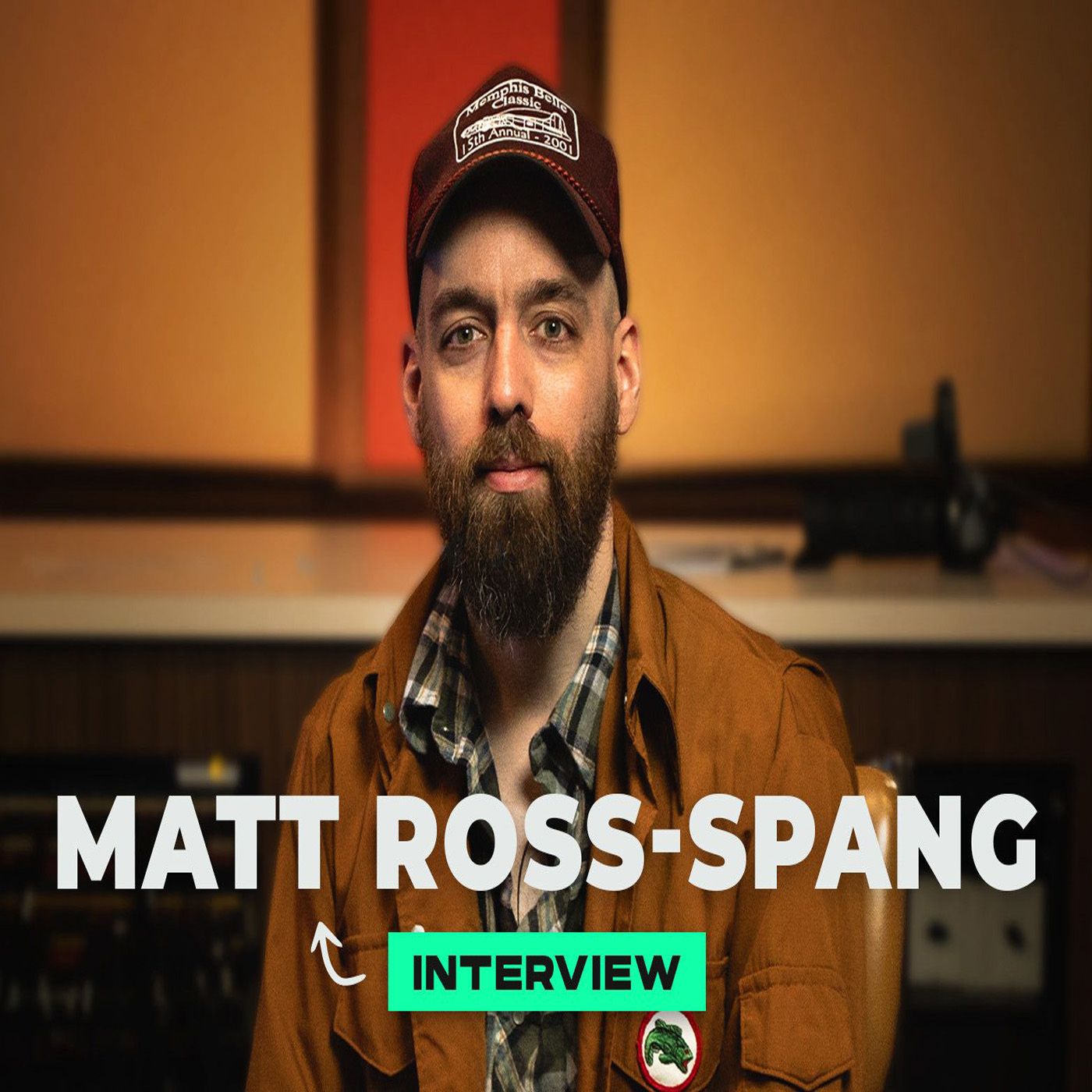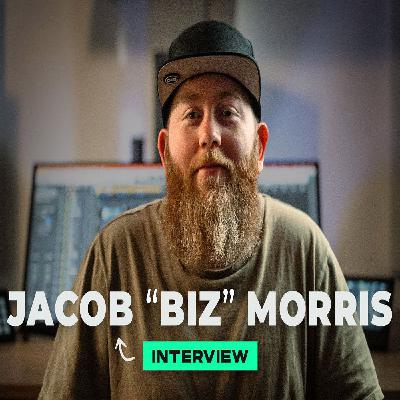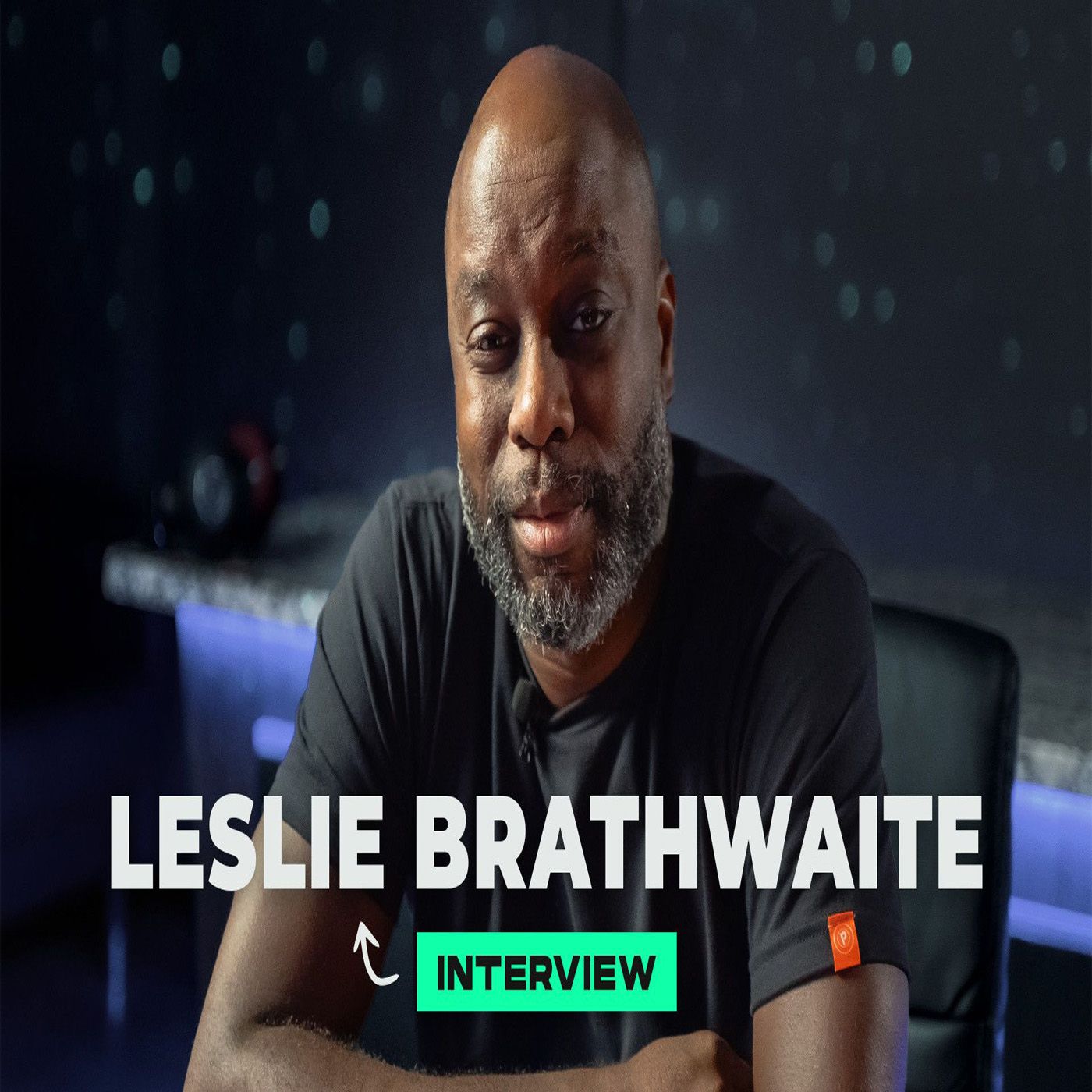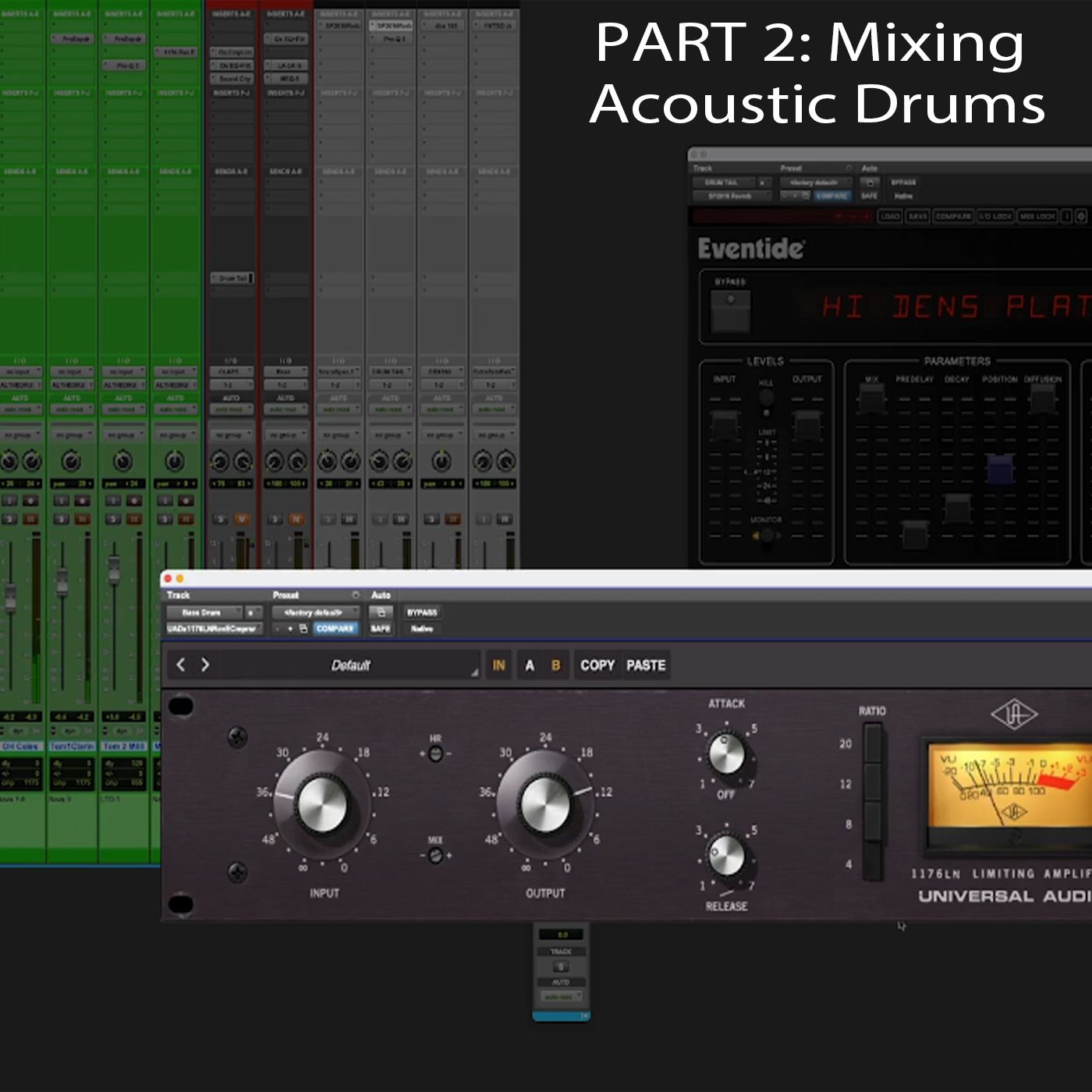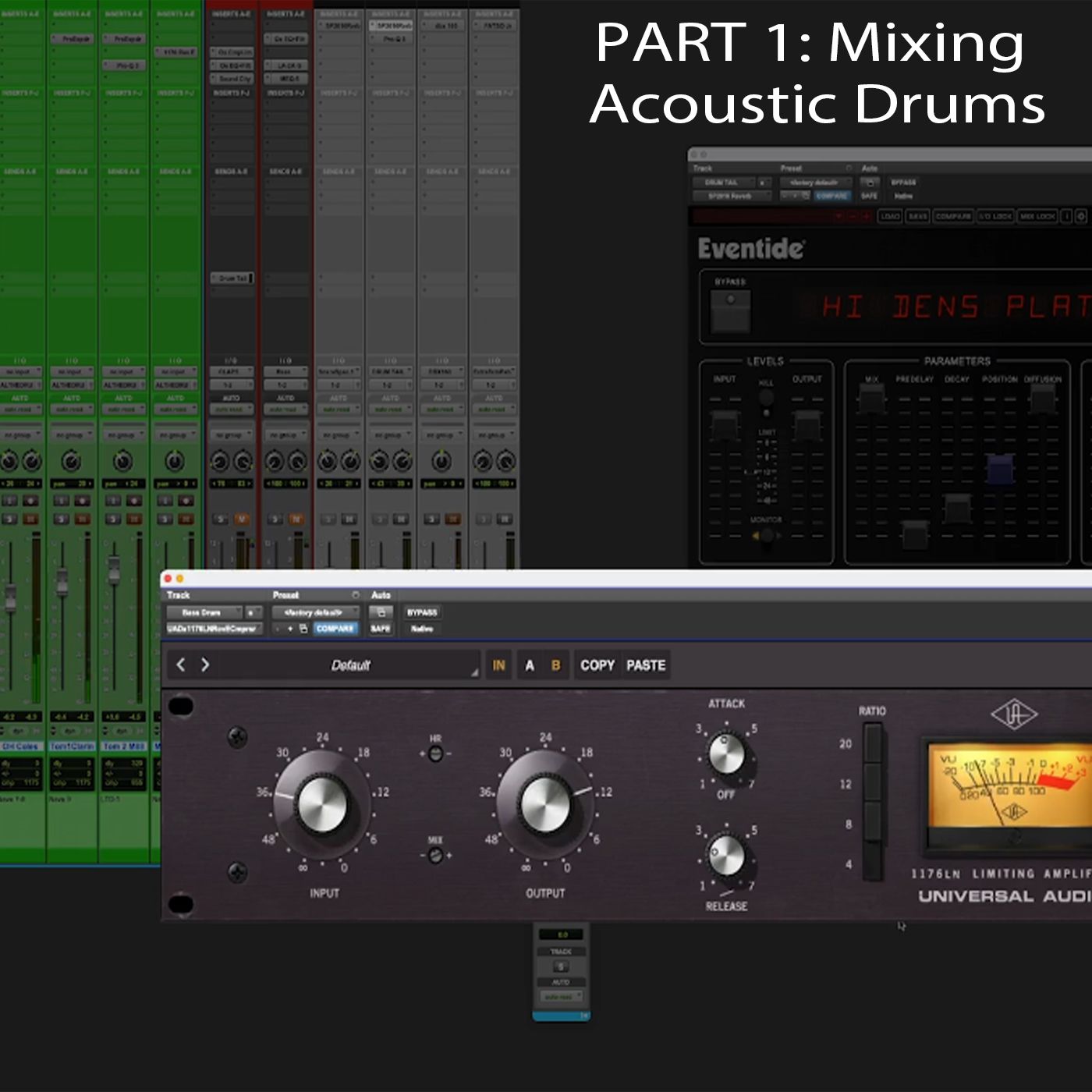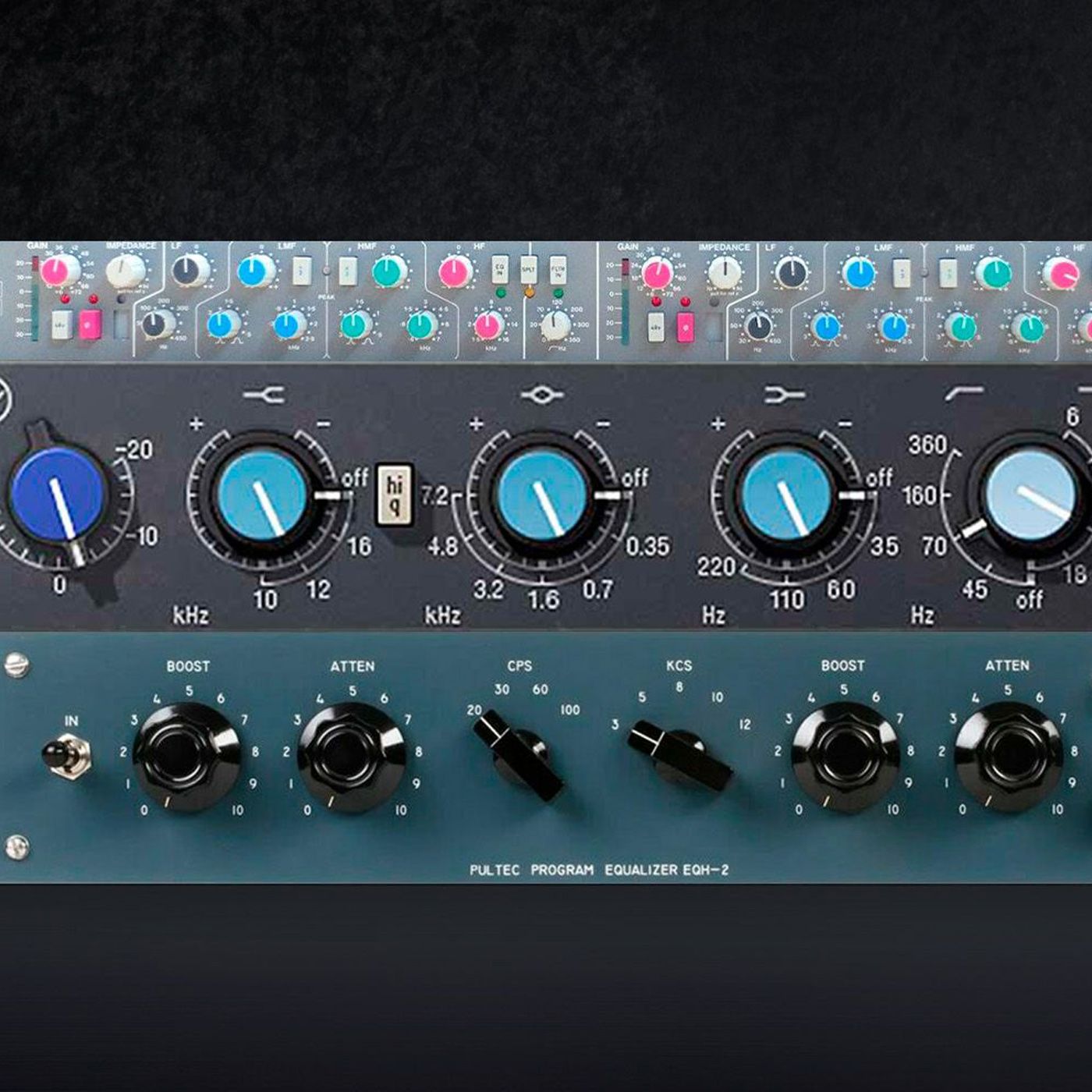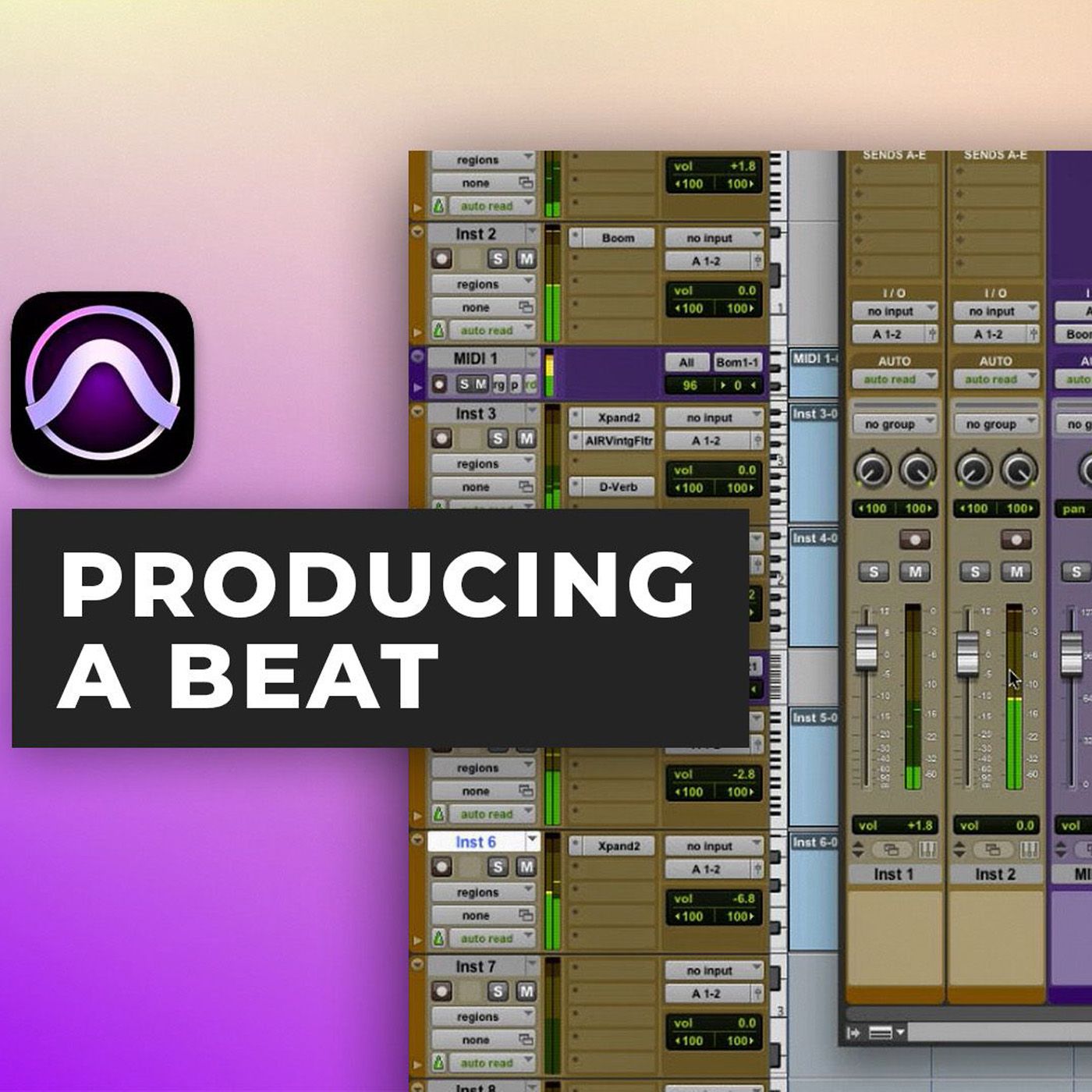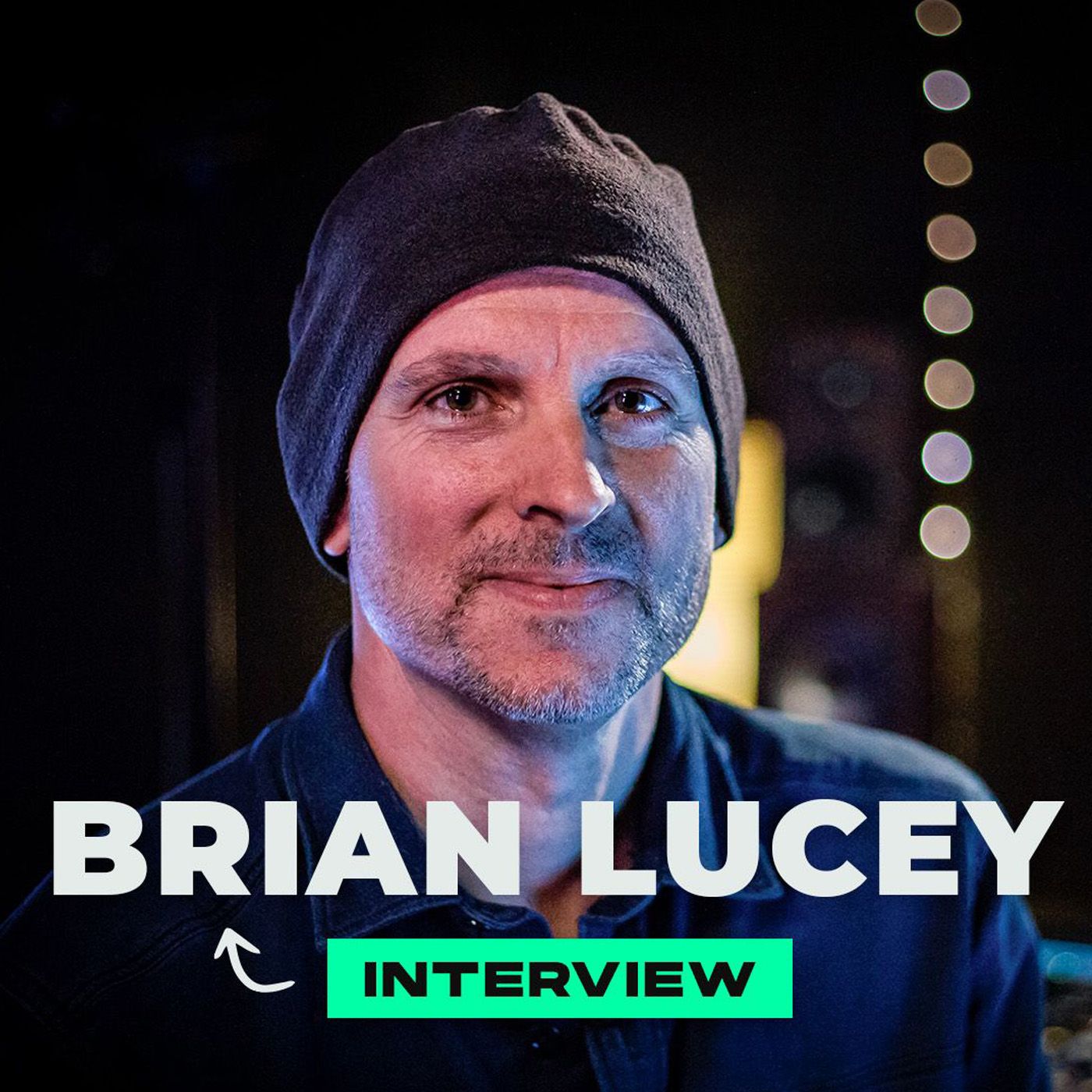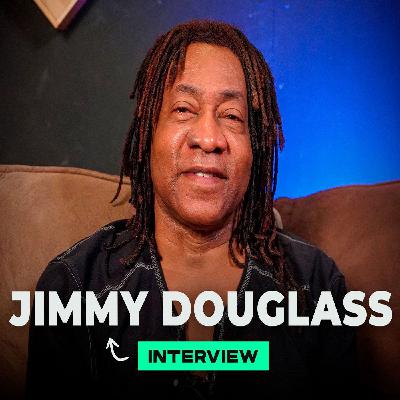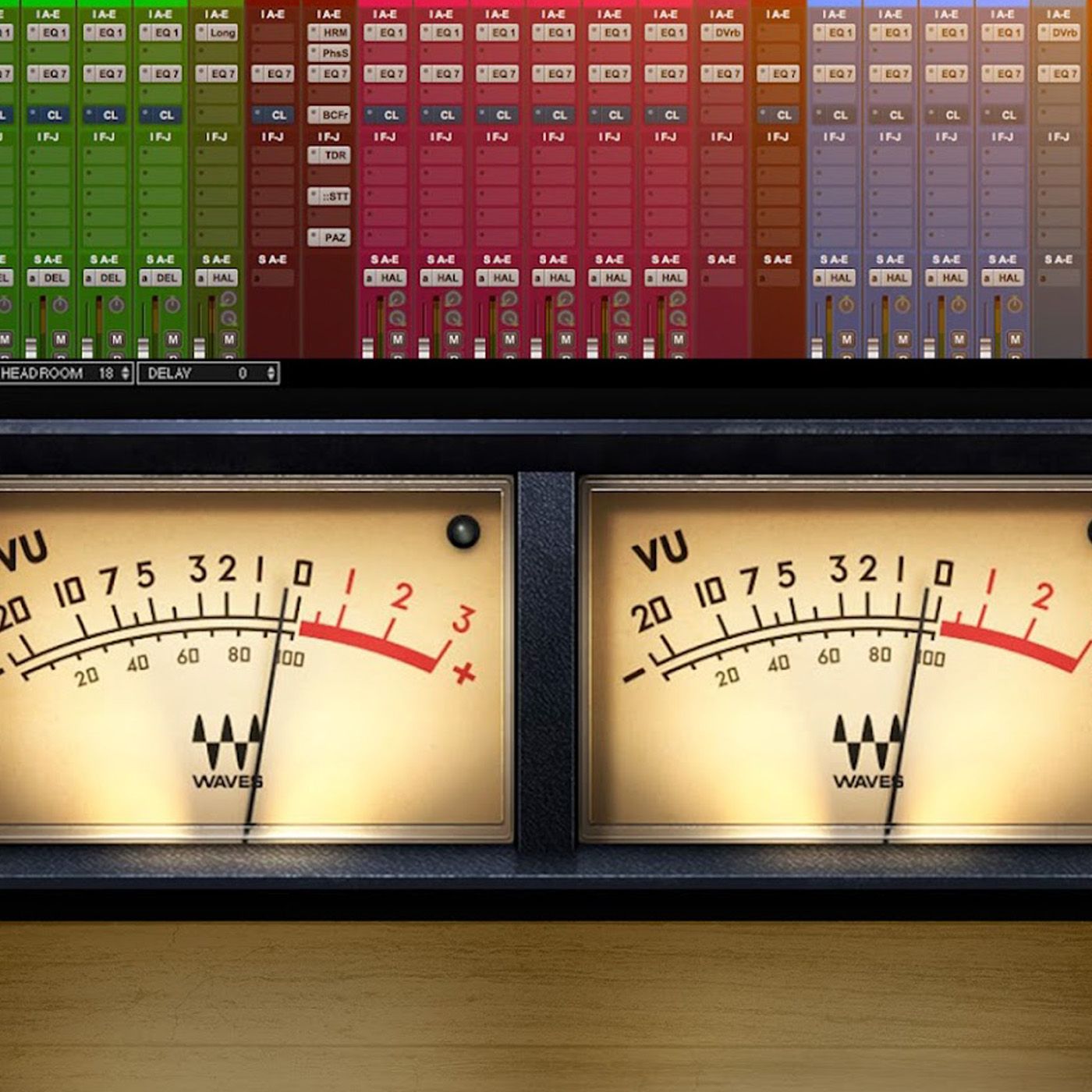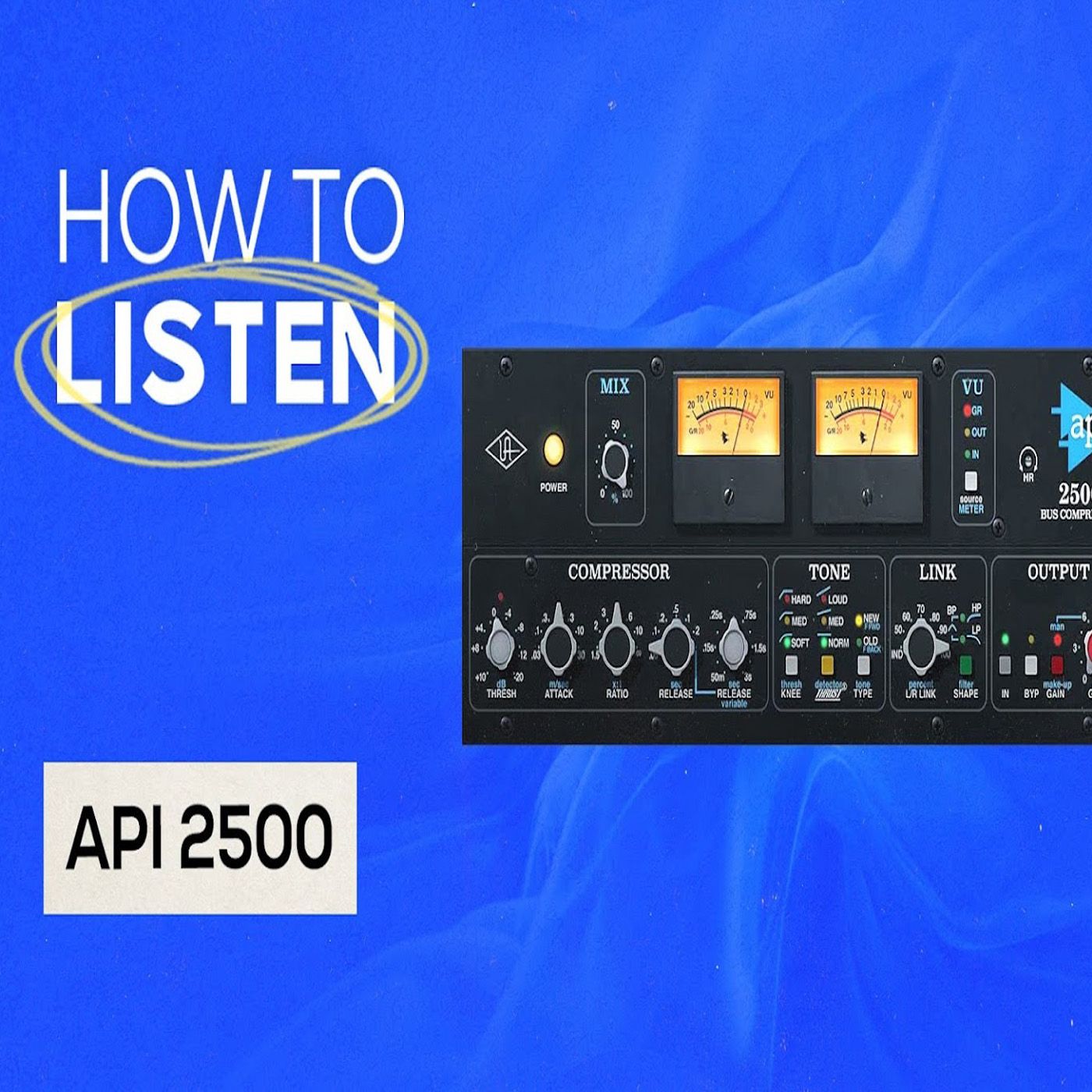Discover Audio Pro Mixing Tips
Audio Pro Mixing Tips

Audio Pro Mixing Tips
Author: Media4Kids
Subscribed: 4Played: 26Subscribe
Share
© Copyright Media4Kids
Description
Welcome to Audio Pro Mixing Tips, your one-stop podcast for all things about audio music mixing!
Take your mixing knowledge with you wherever you are so you can listen on the go, whether you're commuting, working out, or just relaxing at home
In this podcast, we'll delve into the world of mixing, exploring techniques, tools, and tips to help you create professional-sounding tracks. Whether you're a seasoned producer or just starting out, we've got something for everyone.Join us as we chat with industry experts, dissect popular mixes, and uncover the secrets to creating captivating sonic experiences. From EQ and compression to reverb and delay, we'll cover all the essential elements that transform raw recordings into polished masterpieces.
So, grab your headphones, fire up your DAW, and get ready to elevate your mixing skills to new heights!
Take your mixing knowledge with you wherever you are so you can listen on the go, whether you're commuting, working out, or just relaxing at home
In this podcast, we'll delve into the world of mixing, exploring techniques, tools, and tips to help you create professional-sounding tracks. Whether you're a seasoned producer or just starting out, we've got something for everyone.Join us as we chat with industry experts, dissect popular mixes, and uncover the secrets to creating captivating sonic experiences. From EQ and compression to reverb and delay, we'll cover all the essential elements that transform raw recordings into polished masterpieces.
So, grab your headphones, fire up your DAW, and get ready to elevate your mixing skills to new heights!
43 Episodes
Reverse
In this interview, Matt Ross-Spang, a Grammy-winning producer, engineer, and mixer, shares his journey from a young intern at the legendary Sun Studio to becoming one of the most respected figures in Memphis' rich music history. Born and raised in Memphis, Tennessee, Matt's passion for music and recording was nurtured in the rich musical heritage of his hometown.Starting at the iconic Sun Studio at just 16, he worked his way up from intern to chief engineer, recording legendary artists and learning the art of making musicians feel at home in the studio.With a deep appreciation for Memphis's creative culture and history, Matt shares his journey from Sun Studio to Sam Phillips Recording Service and finally building his own studio. Known for his work with artists like Jason Isbell, Margo Price, Elvis, John Prine, Dr. Dogg, St. Paul and the Broken Bones, and many more, Matt's approach unites respect for tradition with innovative techniques. His story is a testament to hard work, sacrifice, and a relentless love for music.
Jacob Morris, also known as Jacob Biz Morris, shares his journey as a mix engineer based in Atlanta, originally from Dallas, Texas. With over 21 years of experience in the music industry, he reflects on his early influences, pivotal moments, and the lessons learned along the way.Career Development: Starting as a tracking engineer, Jacob worked with notable artists like Lecrae and others at Reach Records, showcasing his growth from recording to mixing.Pivotal Career Moves: He emphasizes the importance of mentorship and how learning from seasoned professionals shaped his understanding of mixing and engineering techniques.Professional Relationships: Jacob discusses his friendship with Lecrae and how trust and collaboration led to significant opportunities and professional growth.Creative Process: He candidly shares his thoughts on the subjective nature of mixing, admitting to the constant desire for improvement and how critical feedback has made him a better engineer.Balancing Family and Work: Jacob reflects on the challenges of balancing a demanding career with family life, emphasizing the importance of being present for his children.Advice for Aspiring Engineers: He encourages young engineers to value their time and expertise, underscoring the importance of not working for free and maintaining professional standards.
Award-winning mix engineer Leslie Brathwaite takes us on a journey from his roots in the musically rich St. Thomas, Virgin Islands, to the forefront of the music industry. With fond memories of sneaking out to explore his father's diverse vinyl collection, Leslie takes us on the journey from his early inspirations to becoming one of the world's most sought-after mixing engineers. He shares how the vibrant Caribbean music scene shaped his love for sound, leading him to set up a makeshift studio in his bedroom with a small multitrack recorder. His educational journey continued at Full Sail University, where he developed a strong foundation in audio through hands-on experience.Leslie recounts his rise within the bustling Atlanta music scene, illustrating how he carved out his niche as a freelancer and established his identity separate from industry giants like Dallas Austin. He highlights memorable projects such as mixing OutKast's iconic "Stankonia" and reflects on the pivotal moments that defined his career. Throughout the interview, Leslie emphasizes the importance of staying true to one's passion and the ethics of music production, reminding us that every project—big or small—holds value and potential for connection. This is an inspiring look at the life of a master mixer who remains grounded in his love for music and the stories it tells.
Making acoustic drums compete in the modern landscape of producers using samples and electronic drums is a difficult task. Mixing acoustic drums to have a powerful, modern drum sound takes practice, but it can add a human element to any production that enhances the groove and pocket of the instrument. Award-winning producer, mixer, and engineer, Fab Dupont demonstrates how to transform acoustic drums from raw, flat recordings into polished drum tracks with depth, size, and punch. Follow along as Fab works through a real-world session, breaking down each step of his process. After seeing how Fab mixes the drum tracks, download the session to practice what you have learned in your studio.See how Fab Dupont:Explains the essential techniques for managing phase relationshipsBreaks down the drum perspective (audience vs. drummer) and its role in painting the picture of the drum kitApplies EQ and compression to enhance the tonal balance and punch of each drumUses parallel compression to add weight and depth while maintaining dynamic rangeDemonstrates how to tackle common challenges like bleed and phase issues with precisionLeverages multi-band compression and specific plugins for advanced tonal shapingCreates spatial effects like reverb and panning to seat the drums seamlessly into the mixDiscusses how to shape transients with your favorite compressors to intent to your drum mixesExplains the importance of paying attention to the pocket and groove of the drums while setting attack and release times on compressorsShows different techniques using drum bus compressors for a controlled kit
Making acoustic drums compete in the modern landscape of producers using samples and electronic drums is a difficult task. Mixing acoustic drums to have a powerful, modern drum sound takes practice, but it can add a human element to any production that enhances the groove and pocket of the instrument. Award-winning producer, mixer, and engineer, Fab Dupont demonstrates how to transform acoustic drums from raw, flat recordings into polished drum tracks with depth, size, and punch. Follow along as Fab works through a real-world session, breaking down each step of his process. After seeing how Fab mixes the drum tracks, download the session to practice what you have learned in your studio.See how Fab Dupont:Explains the essential techniques for managing phase relationshipsBreaks down the drum perspective (audience vs. drummer) and its role in painting the picture of the drum kitApplies EQ and compression to enhance the tonal balance and punch of each drumUses parallel compression to add weight and depth while maintaining dynamic rangeDemonstrates how to tackle common challenges like bleed and phase issues with precisionLeverages multi-band compression and specific plugins for advanced tonal shapingCreates spatial effects like reverb and panning to seat the drums seamlessly into the mixDiscusses how to shape transients with your favorite compressors to intent to your drum mixesExplains the importance of paying attention to the pocket and groove of the drums while setting attack and release times on compressorsShows different techniques using drum bus compressors for a controlled kit
The most commonly used tool in an audio engineer's toolkit is the venerable equalizer (EQ). Over the years, EQs have become a powerful creative tool and the most fundamental mixing and mastering device every engineer has at their disposal.In part 1 of the series, The Study of EQ Controls, Grammy winner Fab Dupont teaches you what each knob's function does, and in this tutorial, he dives even deeper to teach how and when to skillfully apply any type of EQ.Learn tricks and techniques that will help form or refine the foundation of how you approach EQing your mixes and masters.Over the course of this hour-long tutorial, Fab Dupont explains:The history of EQ choices and how they've evolved over the decadesHow to recognize the sonic differences between analog and digital EQsLearn to master the subtle differences between types of EQ and know when to best applyCompare several common EQ topologies including Pultec, Neve, SSLThe classic boost + cut trick on the PultecStrategies for using fully parametric EQs without getting lost in endless parametersUsing multiple EQs to achieve a clear and focused mix that doesn't sound like mudHow to compensate for the tone of pieces of gear with transformers, tubes, etcFind and eliminate frequencies, remove masks from your tracks for clearer and more powerful sounding mixesShould EQ come before or after compression? Learn to recognize which way is best suited for a mixHow to hear subtle changes in tone to be sure the settings and techniques you're using are helping and not harming your mixesBy mastering these fundamental skills and techniques, you can keep your focus on the music, not the settings.
Producer Ben Lindell shows you how to produce a track with his midi controller and the built in Pro Tools virtual instruments (Boom, Mini Grand, Xpand & Vacuum)He starts with a simple piano idea and adds drum machines, bass synths, pads and a solid 8 bar groove that’s ready to be arranged into a full song.He also explains how he uses mixing techniques early in the production stage to shape and build tracks together.Learn how to:Work with MIDI in Pro Tools (don’t listen to the Logic-heads, Pro Tools has equally great MIDI everything)Record, edit and quantize while maintaining a natural human feelMix as you produceNavigate presets and then tweak to tasteHead-bop like a pro
Fab Dupont is back to share his evolved techniques since his original mix bus discussions and deliver advanced concepts like clipping, multiband compression, and more. Follow along as Fab works on a real-world example track, "Wildfire," demonstrating these concepts in action. This tutorial is packed with valuable insights, detailed walkthroughs, and advanced strategies for any mixing engineer looking to push their boundaries. Watch as Fab: Explains the intrinsic value of mix bus compressors and dynamic controllers.Unique applications of tape saturation and digital emulations to add rich textures.Uses multiband compression to address specific frequency challenges for a clean and controlled mix.Uses Spice Rack for subtle harmonic distortion to add smoothness and character.Works with multiple compression stages for efficient, holistic, dynamic control to prevent compression artifacts while maintaining dynamic integrity.Explains how to utilize modern limiting techniques to maximize loudness without sacrificing audio quality.
Determining a song’s structure is like unlocking the roadmap for where to go with performance, arrangement, mix ideas and more. It can help you communicate with the artist, fellow band mates, and make production decisions.Multi-award winning engineer Fab Dupont explains several types of song structures as well as his process for identifying the different structures.Fab will analyze over 30 songs with you and explain:The Elements Of Song StructureThe History Of Song FormsClassic Examples Of Popular Song FormsLearn Song Forms like AAB, AABA, Verse Refrain, Through Composed, And More!Once Fab has explained how he analyzes song structure, you will take a quiz to identify the form of Amy Reagan’s song “Crazy”.Discover one of the most important elements of music, Song Structure, with Fab Dupont.SONG LINKS:Franz Schubert - The Erl King || Watch On YouTubeThe Beatles - Happiness Is A Warm Gun || Watch On YouTubeQueen - The March Of The Black Queen || Watch On YouTubeOf Montreal - Women's Studies Victims || Watch On YouTubeMemphis Slim - Lonesome|| Watch On YouTubeJohnny Lee Hooker - Boom Boom|| Watch On YouTubeFrank Sinatra - Blue Moon|| Watch On YouTubeFrank Sinatra - Luck Be A Lady Tonight || Watch On YouTubeSeal - Luck Be A Lady Tonight || Watch On YouTubeBob Dylan - Blowing In The Wind || Watch On YouTubeBob Dylan - The Times They Are A Changin’ || Watch On YouTubeThe Beatles - Eight Days A Week || Watch On YouTubeThe Beatles - Yesterday || Watch On YouTubeThe Beatles - I Wanna Hold Your Hand || Watch On YouTubeThe Beach Boys - God Only Knows || Watch On YouTubeBilly Joel - Just The Way You Are || Watch On YouTubeJimmy Buffett - Margaritaville || Watch On YouTubeThe Rolling Stones - Honky Tonk Woman || Watch On YouTubePharrell Williams - Happy || Watch On YouTubeDrake - One Dance || Watch On YouTubeBritney Spears - Oops I Did It Again || Watch On YouTubeDaft Punk - Get Lucky || Watch On YouTubeBritney Spears - Toxic || Watch On YouTubeDua Lipa - New Rules || Watch On YouTubeMark Ronson - Uptown Funk || Watch On YouTubeColdplay - A Sky Full Of Stars || Watch On YouTubeDJ Snake, Lil John - Turn Down For What || Watch On YouTubeLuis Fonsi - Despacito ft. Daddy Yankee || Watch On YouTubeDavid Bowe - China Girl || Watch On YouTube
Musicians speak many languages. Their native tongue, maybe a few others, music as a language itself, and of course they speak... "musician". The award winning producer, Fab Dupont, explores the fascinating language musicians have developed over centuries in their natural habitat.Learn complex terms like "Deep Pockets", "Playing Outside", "Playing Changes", "Block Chords", "Open Voicing" as well as important lifestyle choices like which room you should park the producer and their girlfriend/boyfriend in.After watching this video, you'll be able to communicate with the hippest of pocket players grooving deep on the back beat out in the live room, and even the sit in players who improvise their riffs in the vamp way outside after the scat singer does the count off at the head of the first standard of your next gig… Ya dig?
Listening to your monitors may seem straightforward, but there's much more to it than just sitting in front of them and hitting play. Your listening habits hugely impact your mixing ability and the translation of your work to other systems. Award-winning producer and engineer, Fab Dupont dives into the science and art of monitoring. He explains how volume affects perception, the importance of consistency, and strategies to ensure your mixes translate perfectly outside of your studio.See how Fab Dupont:Explains the concept of monitoring levels and how they influence your mix balanceDetails the significance of the Fletcher-Munson curve and how it guides optimal listening levelsShows practical steps to standardize your monitoring level using SPL meters and simple calibration techniquesDiscusses how to use different types of monitors and headphones to cross-reference your mix and ensure balance across all playback systemsDemonstrates methods to adjust your listening environment to overcome room acoustics and speaker idiosyncrasiesShares tips on managing ear fatigue and ensuring consistent mixing quality over long sessionsExplores how quiet listening can be particularly effective for placing vocals and maintaining mix balanceTeaches how to set up secondary reference speakers to get an alternate perspective on your mixShows how to use the Process.Audio plugin, Decibel, to listen to AirPods when working in Pro Tools
Mastering, the black art of the audio process...There are so many tools at your disposal when it comes time to put the finishing touches on a record. Do you know what they are? More importantly, how well can you use them? Fab discusses the 8 tools essential to the art of mastering and shows you exactly how best to use them. This video is full of examples that are applied to a wide range of musical styles. You’ll gain a deeper level of understanding as he explains the theory and reasoning behind the application of every tool.Tools covered:The StudioMeteringCompression (and parallel compression)Multiband CompressionDe-esserEqualizersPeak LimiterSum & Difference (aka Mid/Side)Mastery of these tools allows you to enhance sonic characteristics while correcting mix balance issues, giving your recordings power, clarity, and focus.Here’s just a taste of what you’ll learn:Why the room is the most important tool in mastering, why your rooms probably sucks, and how to deal with a less than ideal roomThe importance of great metering and why you NEED itUnderstand and optimize a song’s dynamic rangeHow to make masters sound natural and maintain their artistic integrityThe different roles compression play in masteringHow to use parallel compression to add density to the trackThe role of EQs in mastering and why many mastering engineers use two EQsThe purpose of the peak limiter
Here you are, mic in place, instrument ready, player playing, life is good, one question remains: just how loud should you record that triangle part? Loud, very loud, extremely loud? What's the best level? Is there a best level? Should you care? Why should you care?If you have asked yourself these kinds of questions, if you spend a lot of time discreetly resetting clip lights and wondering what your DAW is trying to tell you then this video is for you. If you have not asked yourself these questions, you probably should because proper recording levels are the first step in a good sounding track. So watch the video already and find out just where to park your levels to give yourself the best chance at that best engineer Grammy Award.
Join award-winning producer and mixing engineer Fab Dupont as he dives deep into the nuances of the API 2500 bus compressor. Renowned for its versatility and distinctive sonic character, the API 2500 has earned its place on the mix bus of thousands of songs. See how Fab Dupont: Breaks down the history of the API 2500 designed by Paul Wolf and shares Paul’s notes on his approach to the circuit designExplores the history of the API 2500 and shares his journey of discovering its unique qualities.Breaks down each parameter of the compressor, demonstrating how they affect the audio and shares his preferred settings for different applications.Compares the hardware version of the API 2500 to its software counterparts.Discusses the design features that make the API 2500 unique, including its transformers, op-amps, and the distinctive 'Thrust' circuit.Conducts a side-by-side comparison of the API 2500 with the SSL bus compressor, highlighting the audio characteristics and applications of each


